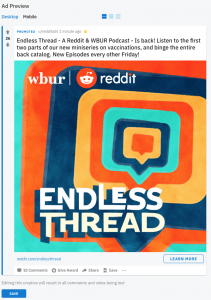Talking About TV: Most Talk YouTube — Especially Younger Viewers
Nielsen just released the latest version of The Gauge, its monthly TV video viewing time-spent report of what Americans watch on their televisions across broadcast, cable (including satellite) and streaming delivery. One of the big headlines from the report is that Google’s YouTube now captures 7.9% of all video viewing on U.S. televisions, more than any other streamer.
Another headline from the report is that TubiTV just passed the 1% threshold of all TV viewing, joining Pluto TV as the second ad-free streaming service to have exceeded that threshold. In total, streaming now represents 34.3% of video viewing on TV.
There’s no question we are watching the TV and video viewing landscape change before our eyes. And much of streaming content carries no or few ads, so that time spent on ads within streaming services is significantly less than the total time spent on streaming. Still, moves like Netflix’s new ad-supported tier and Amazon releasing more of its hot shows to its free, ad-supported streaming service will help close that gap quickly.
I believe that everyone in the media and ad business today now needs to ask themselves, “What is TV?”
Today’s TV is certainly not what I grew up with as a kid in a small coal town in western Pennsylvania, watching on one of the early cable systems in the late 1960s and 1970s — and wondering why any viewers would accept ads on cable networks like MTV and ESPN, since we had to pay to get them. Now, with the fast-growing world of streaming, we all must change how we define TV, it, how we buy and sell ads on it — and, critically, how we measure it.
In that process, here are some of the issues we need to pay attention to:
Linear still dominates TV viewing. The future is not a bad one for TV companies. Linear delivery still dominates TV viewing in the U.S., and will for many years. Viewing on “diginets,” the free over-the-air channels delivered by broadcast companies, is already as big as streaming when you focus on ad delivery, and these channels are growing at 20+% per year.
Not all content is the same. There’s no question that the content on YouTube is not like what you watch on CBS or NBCU. Nor are all shows on more traditional channels of equal or even similar quality. Reruns of “America’s Funniest Home Videos” (with lots of cats on skateboards) isn’t going to be as valuable for most brand advertisers as NFL games or “The Bachelor,” but if that’s where a brand’s audiences is, there’s certainly a price they will pay to reach viewers there. The same for top influencers on YouTube or top streamers on Twitch.
The future of TV will be defined by audiences, not producers. Fundamentally, our industry’s future will be defined by its users, not producers. Viewers will choose our winners and losers, voting with their time and attention. We need to be ready for that future, open to how viewers see “TV,” and make it accessible and comparable to all other TV ad products, with lots of intelligence and automation, and trusted, independent and verifiable measurements.
What do you think?
(1)






